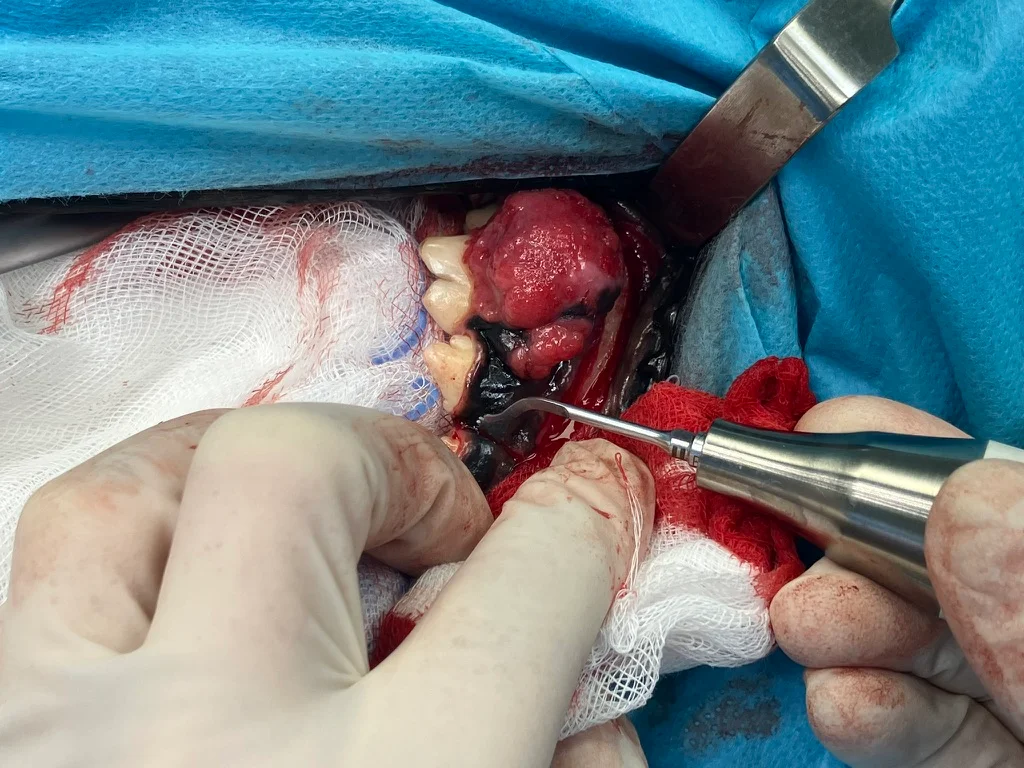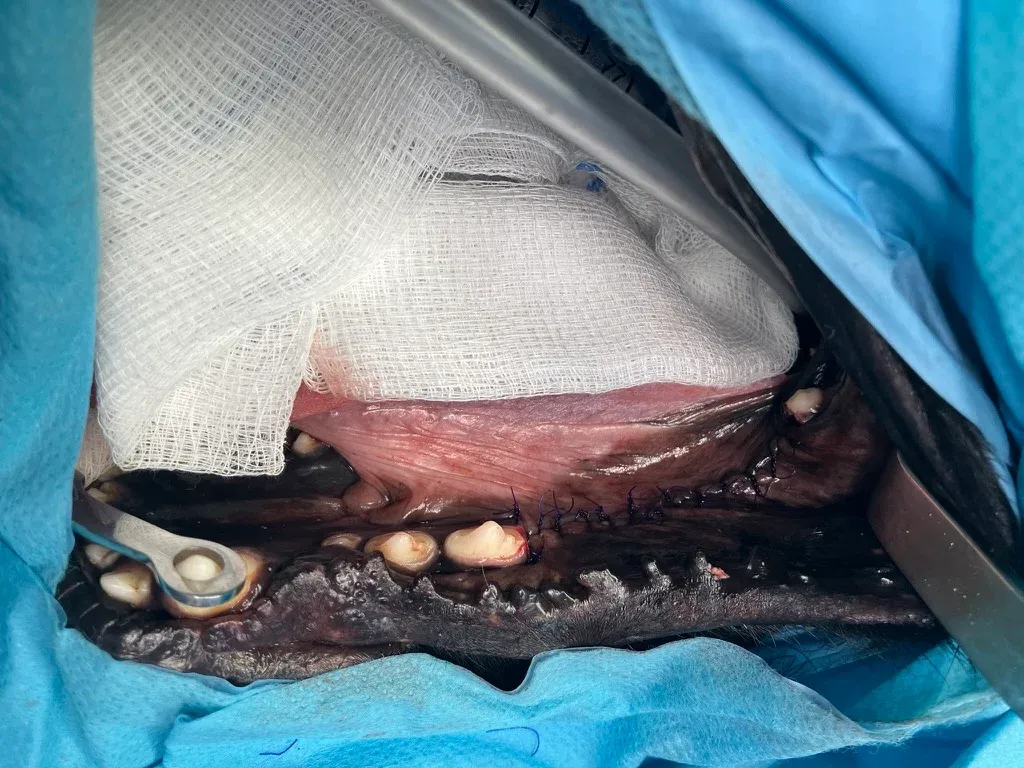Treatment of a Jaw Tumor
A case study of Lola, her diagnosis and surgery.
// Surgical procedure //
Case Study:
Lola's Story of her Jaw Tumour
Patient Profile
Name: Lola
Breed: Labrador Retriever Female
Age at treatment: 7 years old
Condition: Acanthomatous ameloblastoma — a benign but locally invasive tumour of the lower jaw.
It started with a small amount of blood

Lola’s family noticed a small amount of blood on her lips after she had a treat. On checking her mouth, they discovered a lump on the inside of her lower jaw.
During her initial visit, our Vets found a soft mass near one of her back teeth. The rest of her mouth looked healthy, and her lymph nodes weren’t enlarged—both reassuring signs. However, we recommended a closer examination under general anaesthetic, including X-rays and biopsy samples, to find out exactly what we were dealing with.

Diagnosis: A Rare Type of Jaw Tumour
Under anaesthetic, we examined the lump in more detail, collected tissue samples, and took X-rays of her mouth and chest. We also checked her lymph nodes using a fine needle sample.
The results showed Lola had an odontogenic tumour—a type of growth that starts in the tissue involved in tooth formation. In her case, it was an acanthomatous ameloblastoma. This tumour is not malignant, but is often locally invasive where it can grow into the surrounding jawbone if not removed completely.
Thankfully, Lola’s chest X-rays and lymph node samples showed no signs of spread.
Our Case Studies
Our Case Studies
Contact Us Now
Our knowledgable team are always happy to answer your queries, no matter how great or small!

Surgical Treatment
To treat the tumour, Lola underwent a procedure called a segmental mandibulectomy. This involved removing the affected part of her lower jaw, including three nearby teeth, to ensure the entire tumour was removed.
The surgery was performed using advanced equipment that allowed us to make highly accurate bone cuts while preserving nearby soft tissues (including a major artery, vein and nerve). Lola’s jaw was then repaired using dissolvable stitches, and she recovered smoothly from the anaesthetic.
She went home the same day with a full care plan, including soft food, pain relief, and rest.

Recovery and Results
The lab confirmed that Lola’s tumour had been completely removed, with no remaining tumour cells—a fantastic outcome. This type of tumour does not spread, and once removed fully, it rarely returns.
Lola healed beautifully. She was comfortable, eating well, and showed no signs of infection or swelling. Over time, she returned to her normal routine, eating both soft and dry food with ease.

One Year On
A year after her surgery, Lola remains in great health.
She has shown no signs of tumour recurrence, and her quality of life is excellent. She’s active, pain-free, and enjoying life as she always has.
Key Takeaways
- Acanthomatous ameloblastoma is benign (non-malignant), but needs complete removal to prevent local spread
- Early investigation with biopsy and imaging is crucial
- Surgery can be curative when performed early and completely
- Most dogs adapt very well after jaw surgery and continue to enjoy a full, happy life
If you notice a lump in your dog’s mouth—or any changes in their eating or behaviour—early action is key. Our team is here to help with the right diagnostics, expert care, and a personalised plan for your pet.
You can explore more about our services and facilities via the link below:
// Booking made easy //
looking for a treatment for you pet? book online today
It could be a procedure that can benefits your pets long term health and behaviour.
Read more Case Studies from our range of veterinary services
Ralph the Frenchie
Read Ralph’s Journey from Constant Discomfort to a New lease of life.
Bailey the Jack Russell
Read about Bailey’s battle with a disabling itch, the process of diagnoses and treatment pathway.








